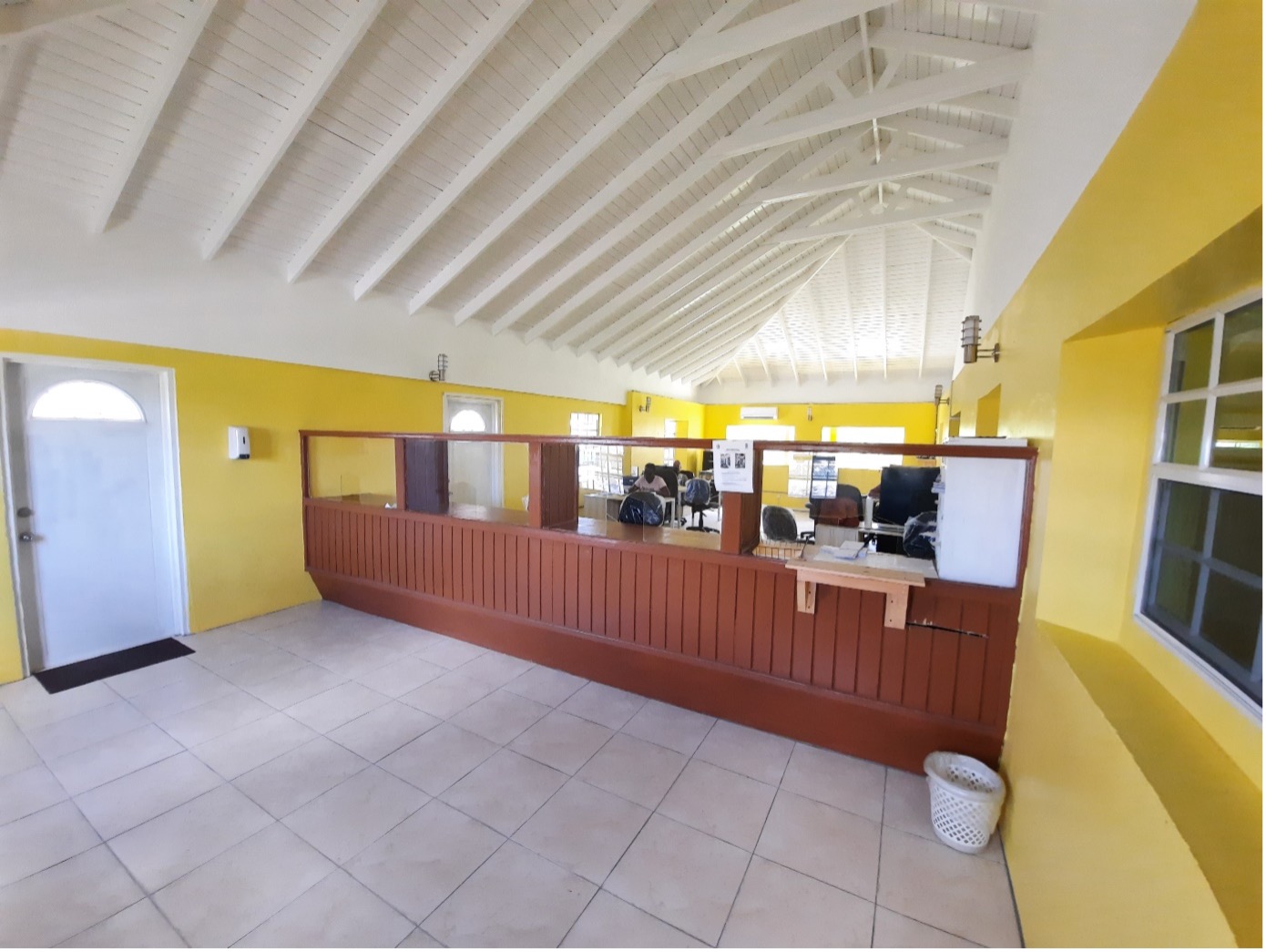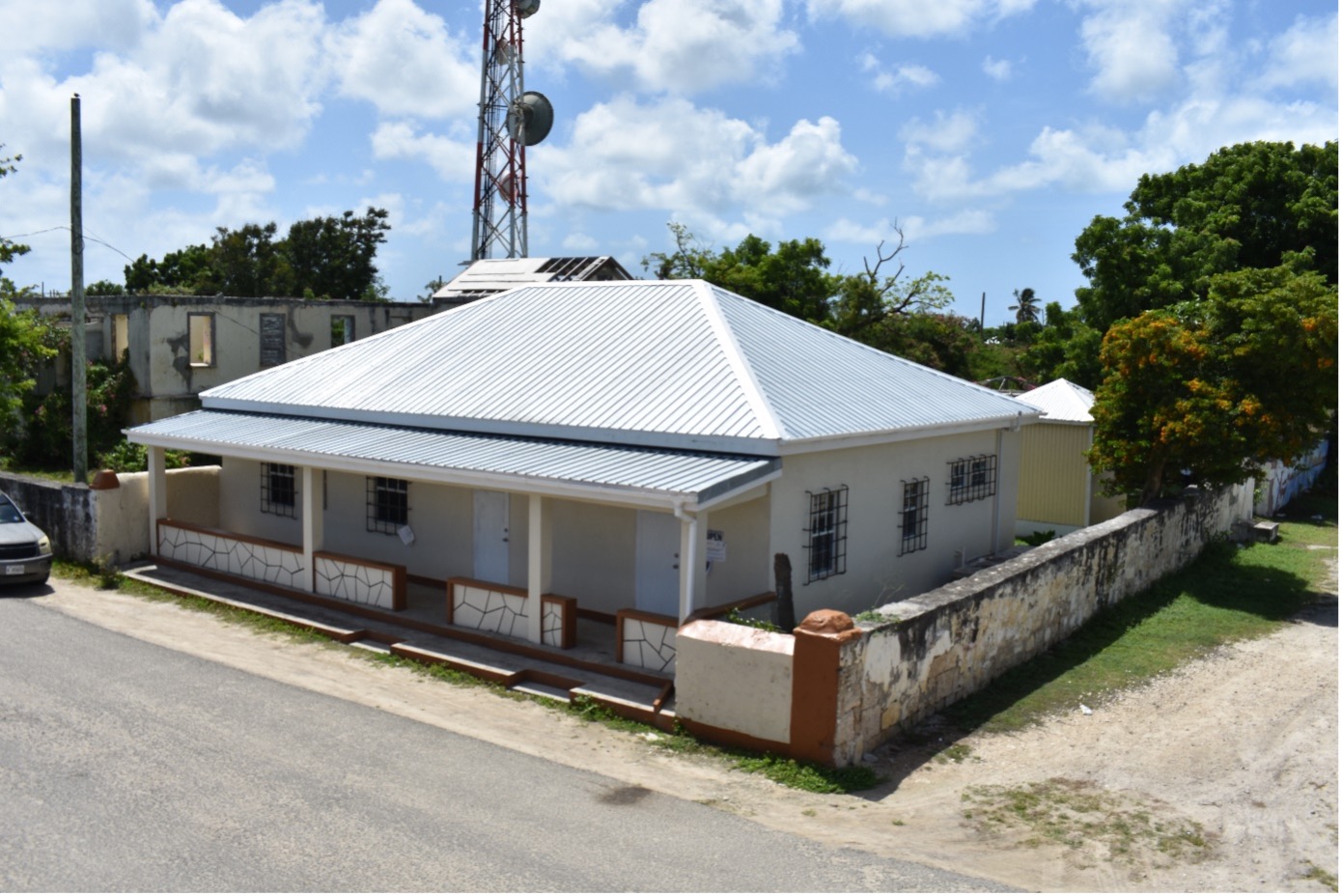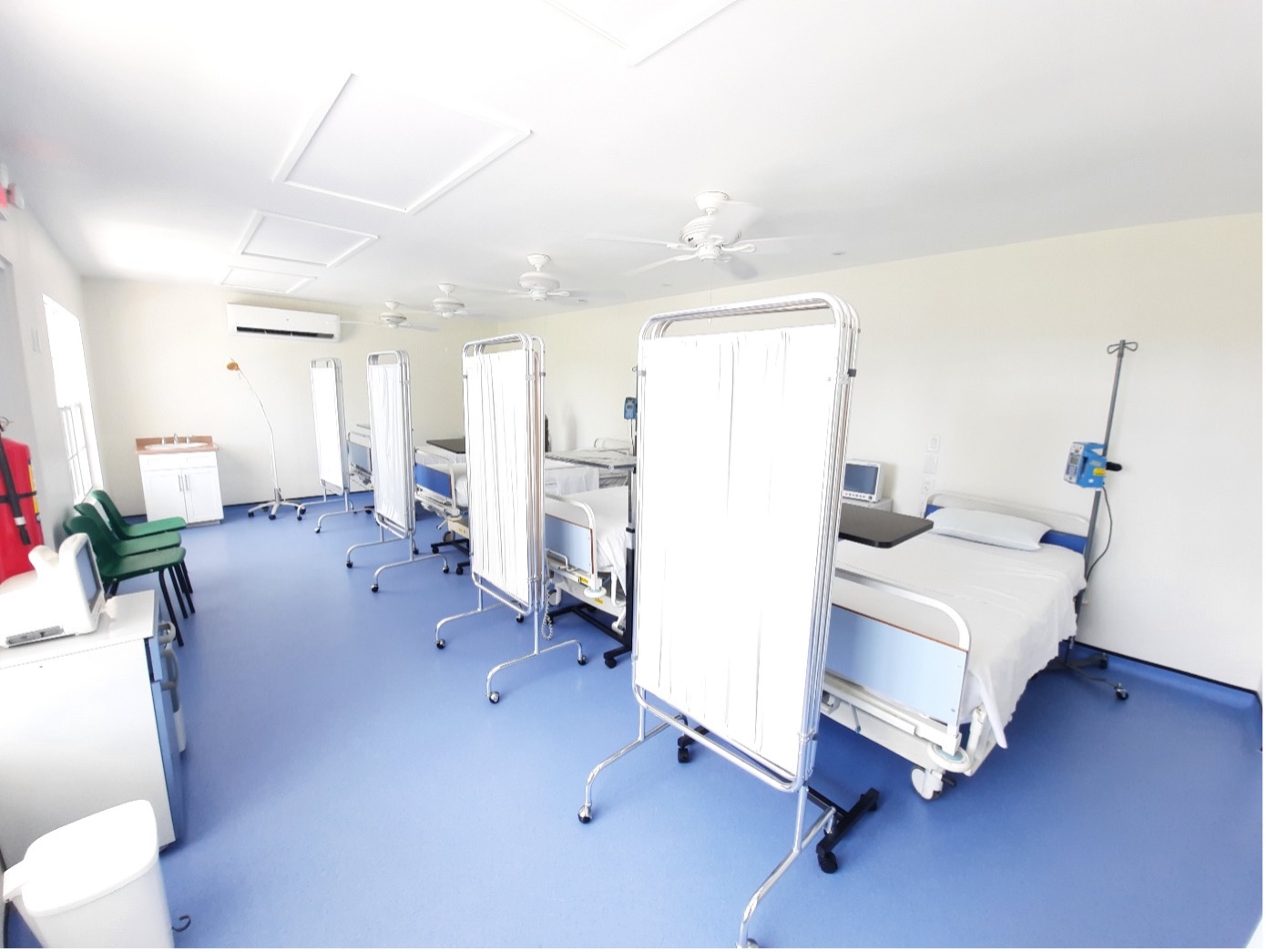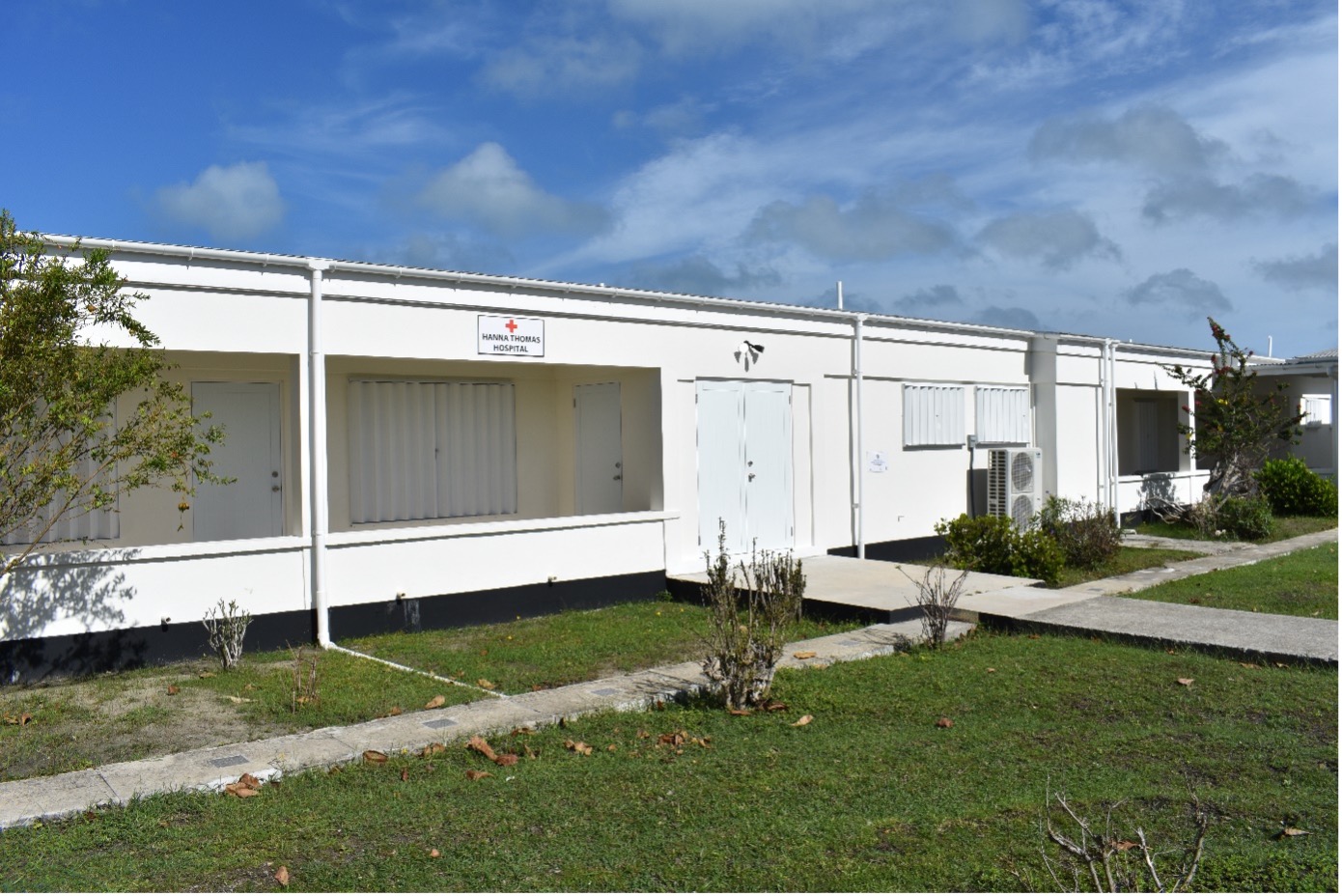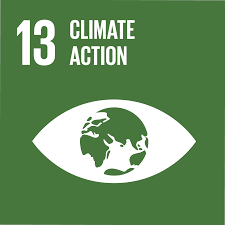 Rehabilitation of Barbuda’s Key Public Infrastructure Following Hurricane Irma
Resilient rehabilitation in Barbuda post Hurricane Irma
Rehabilitation of Barbuda’s Key Public Infrastructure Following Hurricane Irma
Resilient rehabilitation in Barbuda post Hurricane Irma

Challenges
On 6 September 2017, Hurricane Irma hit the Islands of Barbuda and Antigua with catastrophic effect. Hurricane Irma made landfall as a category 5 storm (Saffir- Simpson scale), packing winds in excess of 180 mph (277 km/h).
Hannah Thomas Hospital complex, composed of four main buildings, is the only health care facility on the island and was significantly impacted. As indicated by the Government of Antigua and Barbuda and the affected communities, the provision of health care services was critical to promoting the return of the displaced population as well as the sustainable resilience of the island.
The public administrative buildings on the island inclusive of the Post Office were significantly damaged by the hurricane. The Post Office is the only facility on the island that provides a number of essential services, including mail services (delivery of letters and parcels, selling postage stamps and packaging and providing important government forms and services (e.g., passport applications, birth certificates and social security benefits).
Following Hurricane Irma, the entire Barbuda population of approximately 1,800 residents was evacuated to the main island of Antigua. The rehabilitation of the hospital and the post office were therefore seen as essential for residents to be able to return to the island.
Towards a Solution
With the support of the United Nations Development Programme (UNDP), the Hannah Thomas Hospital and the Barbuda Post Office were reconstructed and equipped in a sustainable manner, using the Build Back Better approach. Both structures were built stronger to make them more resilient to future weather events. A focus was placed on strengthening local capacities through the enforcement of construction codes (OECS and Antigua and Barbuda Building Guidelines) and with quality control and quality assurance being done jointly with the Ministry of Works (MoW) and National Office of Disaster Services (NODS) representatives. This project was supported through the India-UN Development Partnership Fund managed by UNOSSC.
The return of quality healthcare and governance functions and the storm-resistant upgrades are consistent with SDGs 3 (Good Health and Wellbeing) and 13 (Climate Action) and the climate change and disaster risk reduction priority areas of the SAMOA Pathway. This directly benefited over 1,200 Barbudans who returned to the island. The rehabilitation work at the Hannah Thomas Hospital, based on Pan- American Health Organization/World Health Organization recommendations, focused on the in-patient area, which included male and female wards, maternity, sterilization, orderly and conference rooms and a matron’s office. Additionally, to help with long-term resilience and continuous operation in the case of natural hazards, the following upgrades were made:
- Installation of an uninterruptible power supply backup system that provides up to 12 hours of power;
- underground service connection installed;
- storm drainage system up-sized to minimize the risk of flooding;
- pump room retrofit, including the installation of a new pump system; and
- installation of hurricane shutters.
The rehabilitation of the Post office was done using more resilient standards—the OECS Code and Antigua and Barbuda Building Guidelines—to minimize damage from future disaster events.
UNDP worked collaboratively with key government stakeholders, including various ministries (the Ministry of Works, the Ministry of Housing, Lands and Urban Renewal, the Ministry of Health, Wellness and the Environment; and the National Office of Disaster Services) to ensure adherence to national priorities and to prepare and agree upon the Bill of Quantities and technical drawings.
This intervention successfully reduced long disruptions in health and governance services on the island by restoring access to safe government and health facilities. In designing a resilient and sustainable community-based recovery project and applying resilient designs and construction practices to Build Back Better in the health sector, ensured more robust and resilient public infrastructure.
Based on this project experience, the below recommendations for construction projects may have relevance to other Caribbean territories that wish to replicate this project.
- Partnership management is a sound investment allowing challenges to be overcome for the most part based on consultations with key partners under the leadership of the government.
- Operations in the Caribbean are complex and special consideration needs to be taken for projects implemented in sister islands, as is the case of Barbuda in Antigua and Barbuda. Logistically, all materials need to go through the main island and transportation is often a challenge.
- Engagement with line ministries is important to ensure adherence to national priorities and standardization across the country.
- Communication with community and government officials is critical to effectively manage expectations and respond to implementation challenges.
- Joint collaboration between UNDP and Public Works Department on Bills of Quantities and technical drawings finalization, although a relatively lengthy process, is a vital step to ensure works are completed to agreed national standards
Contact Information
Countries involved
Supported by
Implementing Entities
Project Status
Project Period
URL of the practice
Primary SDG
Secondary SDGs
Similar Solutions
| NAME OF SOLUTION | Countries | SDG | Project Status | |
|---|---|---|---|---|
Accelerating the Transformational Shift to a Low-Carbon Economy in Mauritius Towards supplying 35 percent of the country’s energy needs with renewables by 2025 |
Antigua and Barbuda, India | 05 - Gender Equality 09 - Industry, Innovation and Infrastructure 13 - Climate Action | Ongoing | View Details |
Adapting Digital Payment to Initiate Rapid Response During Pandemic Bangladesh government disbursed cash aid to 5 million most vulnerable families through mobile financial service in order to minimize the financial impact during COVID 19 within the shortest period of time. |
Antigua and Barbuda, India | 03 - Good Health and Well-being 05 - Gender Equality | Completed | View Details |
Addressing Racial and Ethnicity-based Discrimination and Strengthening the Protection of Rural Afro-descendants UNFPA supports data disaggregation as a tool to fight racism and ethnic discrimination |
Antigua and Barbuda, India | 01 - No Poverty 02 - Zero Hunger 03 - Good Health and Well-being 05 - Gender Equality 06 - Clean Water and Sanitation 11 - Sustainable Cities and Communities 16 - Peace and Justice Strong Institutions | Ongoing | View Details |
ADELANTE Triangular Cooperation European Union – Latin America and the Caribbean |
Antigua and Barbuda, India | 10 - Reduced Inequalities | Ongoing | View Details |
Advancing Public Health Policies to Address Overweight and Obesity in Chile and the Caribbean Community Leveraging experiences from Chilean labelling and marketing legislation to improve children’s health in the Caribbean |
Antigua and Barbuda, India | 02 - Zero Hunger | Completed | View Details |
